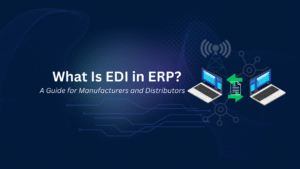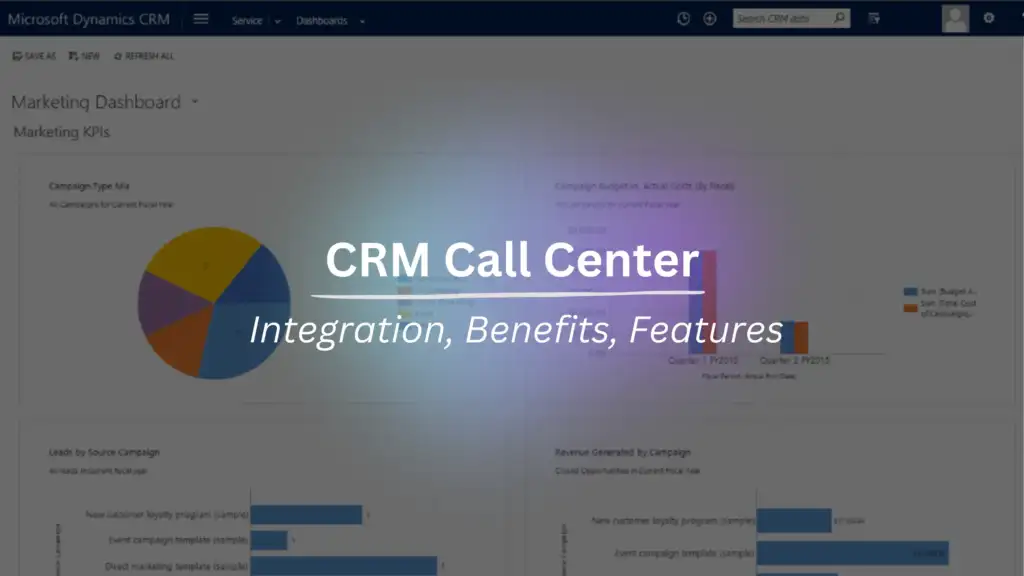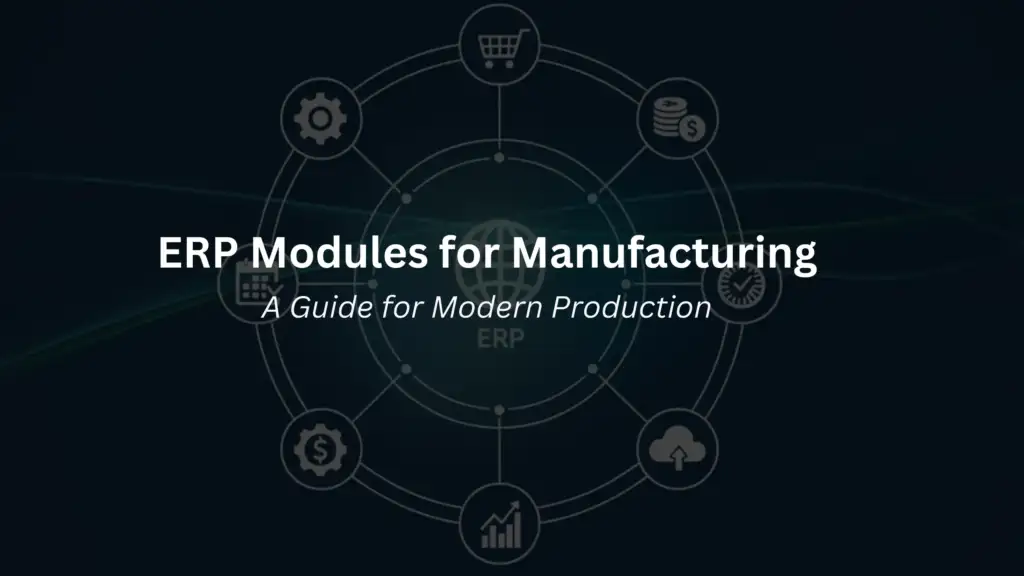Nikoo Samadi
Inventory is the most important thing for any business that creates items. Parts, finished goods, and raw materials all need to move at the right time and in the right amount. Costs go up, production slows down, and orders are late when inventory is not well managed.
And this is where an ERP inventory management module comes in handy. It lets manufacturers keep track of their stock, control where it goes, and link it to the rest of the business. Managers don’t have to guess what information is available or rely on old records when they can see accurate information and make decisions with confidence.
In this blog, we will look at the role of the ERP inventory management module in manufacturing ERP. We will cover the challenges it solves, the features it offers, and the benefits it brings. We will also discuss common hurdles during implementation and how manufacturers can get the most value from this ERP module.
Common Inventory Challenges in Manufacturing
Manufacturers often have problems with their inventory that slow them down and make them lose money. New data show why it’s important to have better tools.
Stockouts or overstocks are a big problem that can happen with inventory. In 2020, the cost of inventory distortion around the world was about $1.8 trillion. Inventory costs can be cut by about 10% by cutting down on stock-outs and overstocks.
Another problem is that inventory goes missing. Over 40% of manufacturers think that they will lose inventory in the next year due to theft, damage, or an incorrect count.
It’s hard to guess what demand will be. Makers order either too much or too little when they can’t be sure what will happen. Both make things worse. Poor demand forecasting raises the risk of running out of stock or having too much inventory.
Mistakes in the data make things worse. A lot of people use spreadsheets or systems that aren’t connected. Records that don’t match what’s in stock can cause production delays or mistakes. It takes a lot of work to reconcile.
Finally, there is the cost of having too much stock. Inventory that isn’t used wastes money and space. In one study, firms said that high costs for holding inventory were one of the main things that made prices go up.
It’s easy to see why manufacturers use an ERP inventory management module when they face these problems. Structure, real-time inventory tracking, and integration with a stock control system are some of the benefits that help cut down on waste, delays, and mistakes.
Simplify Your Decision with GEM365
Get in touch with GEM365 to guide you through the process and get consultation for free.
Key Elements of an ERP Module for Inventory Management
Several essential features are included in an inventory management module. Manufacturers can track materials, cut waste, and prevent mistakes with the aid of these features.
Tracking Inventory in Real Time
As stock levels fluctuate across locations, the system displays them. It keeps track of finished goods, work-in-progress (WIP), and raw materials. Maintaining precise real-time inventory tracking across production and warehouses is crucial to striking a balance between excess and shortage, according to Netsuite’s Manufacturing Inventory Management Guide 2025.
Automated Alerts & Reorder Triggers
By setting minimum levels, the module enables the system to automatically notify you or place orders when stock levels are low. This lowers the possibility of stockouts. How to Choose the Best ERP for Manufacturing – Expert Guide 2025 notes this as a key benefit in improving ERP supply chain module performance.
Management of Suppliers and Vendors and Assistance with Procurement
Procurement functions are integrated with good ERP inventory management modules. They support vendor performance management, lead time tracking, and timely material delivery. Among the tasks that should be linked to inventory, Netsuite’s guide covers vendor management and procurement.
Tracking the Location of Warehouses, Tracking Lots and Serial Numbers
Each unit’s location can be precisely tracked thanks to features like bin-level tracking, lot/serial number support, and environmental conditions (if applicable). This aids in managing recalls and identifying problems. Among the most crucial features listed in Rootstock’s Top Features in Manufacturing Inventory Management Software are complete traceability and lot and serial number tracking. Such features are often part of a warehouse management ERP system.
Forecasting Demand and Optimizing Inventory
Predicting what inventory is required and when is made easier by using demand signals, seasonality, and historical data. In order to avoid overstocking or understocking, Netsuite highlights that accurate forecasting is essential to efficient inventory management.
Connectivity with Additional ERP Modules
Inventory is not a standalone system. It has connections to finance, sales, purchasing, and production planning. Information silos cause delays and inconsistencies when they are not integrated. According to the Manufacturing ERP Features & Benefits guide, inventory control is one of the key components of effective manufacturing ERP systems.
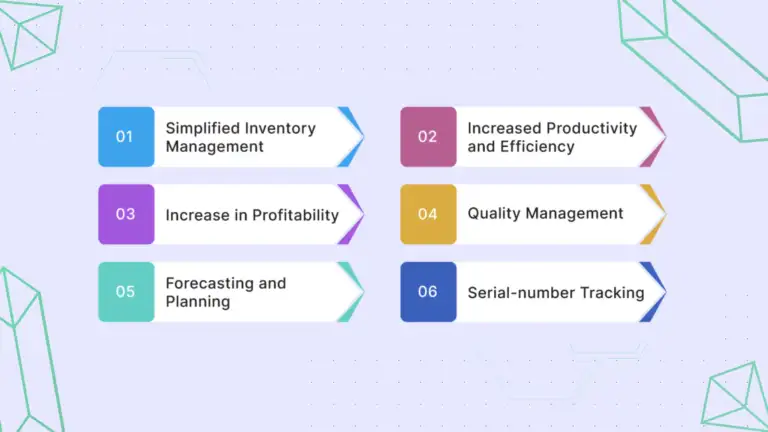

How These Characteristics Avoid Flaws
Poor material control is frequently the first sign of manufacturing defects. By making stock data accurate, accessible, and interconnected, an ERP inventory management module lowers this risk.
The right materials are available at the right time thanks to real-time inventory tracking. Employees are less likely to use the incorrect part or overlook a component when they are not dependent on out-of-date records. Real-time visibility in ERP reduces material errors and scrap.
Tracking lots and serial numbers aids in identifying quality issues. The system pinpoints the precise units that are impacted if a flaw is discovered in a single batch. This lowers recall and rework expenses.
Defects are also reduced through vendor and supplier management. The system identifies problems with late or subpar deliveries by tracking supplier performance and connecting purchase orders to inventory. This lessens the chance of errors brought on by faulty inputs.
Hasty last-minute purchases are avoided with automatic reorder points. Emergency purchases frequently result in lower-quality replacement materials. Manufacturers can source materials on time and maintain consistent quality with the help of stock alerts.
Lastly, inventory data alignment with production records and inspection results is guaranteed through integration with the production and quality modules. As a result, there are fewer discrepancies between the actual and planned construction.
These characteristics work together to control materials before they are used in production, strengthening the foundation for defect prevention.
How These Characteristics Improve Engagement
Manufacturers are subject to strict safety, tracking, and reporting rules. By guaranteeing that records are accurate, complete, and easily accessible, an ERP inventory management module helps in meeting these requirements.
One of the most essential instruments for security is tracking. Every item can be tracked back to its original source with lot and serial tracking. The system instantly provides proof of material origin or handling when regulators request it.
Another advantage is that the records are audit-ready. Manufacturers can extract reports straight from the system rather than assembling spreadsheets or paper logs. This lowers errors and demonstrates process control to auditors. One important component of ERP inventory systems for regulated industries, according to Rootstock, is compliance reporting.
Compliance is further strengthened through integration with quality modules. If a flaw is discovered, the ERP associates it with the precise supplier lot, batch, and inspection record. This produces a thorough audit trail that satisfies legal requirements.
Lastly, accurate inventory data improves safety and environmental compliance. Hazardous materials, for instance, can be tracked by shelf life and location. This keeps dangerous or out-of-date stock out of production.
By combining traceability, reporting, and integration, the ERP inventory management module helps manufacturers stay compliant without adding heavy manual work.
Best Practices & Implementation Difficulties
Although implementing an ERP inventory management module may provide significant benefits, many manufacturers face difficulties in the process.
Data migration is one difficulty. Errors are frequently discovered when transferring inventory records from spreadsheets or outdated systems. Data that is incorrect or incomplete may cause issues with the new system. According to a 2024 Panorama Consulting survey, one of the main causes of ERP projects falling short of expectations is poor data quality.
Another challenge is user adoption. Staff members might reject the change or stick with the outdated procedures if they are not trained. This limits the module’s advantages. According to industry reports, these risks are decreased by practical training and transparent change management.
Integration can be challenging as well. Purchasing, production, sales, and finance must all work effortlessly with inventory. Data silos remain if links are not properly configured.
Pilot testing before full launch, involving warehouse and production workers early, and cleaning data prior to migration are all examples of best practices. Clear communication and ongoing training contribute to increased user confidence. Lastly, establishing measurable goals, like decreasing stockouts or improving accuracy in a stock control system, guarantees the project will be valuable.
Final Thoughts
Every manufacturing operation centers around inventory. Production slows and costs increase when it is not properly managed. Manufacturers can maintain inventory control by using an ERP inventory management module, which provides the necessary structure and visibility.
We have seen how the module lessens common issues like stockouts, excess inventory, and inaccurate records. Real-time inventory tracking, reorder points, supplier management, traceability, and integration are some of its features that support industry compliance and defect prevention.
Although there are obstacles to implementation, manufacturers can reap long-term rewards with clear objectives, robust training, and clean data. As a result, there are fewer mistakes, expenses are reduced, and the capacity to satisfy customer demands is strengthened. For firms using Business Central, or looking at broader warehouse management ERP or ERP supply chain modules, this approach provides a strong foundation for growth.
Table of Contents
Read more


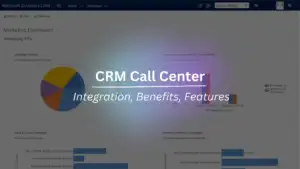

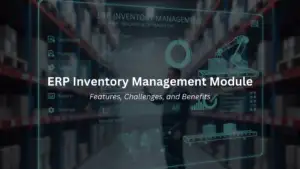

ERP Inventory Management Module: Features, Challenges, and Benefits
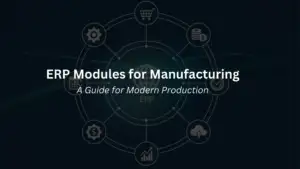

ERP Modules for Manufacturing: A Guide for Modern Production


